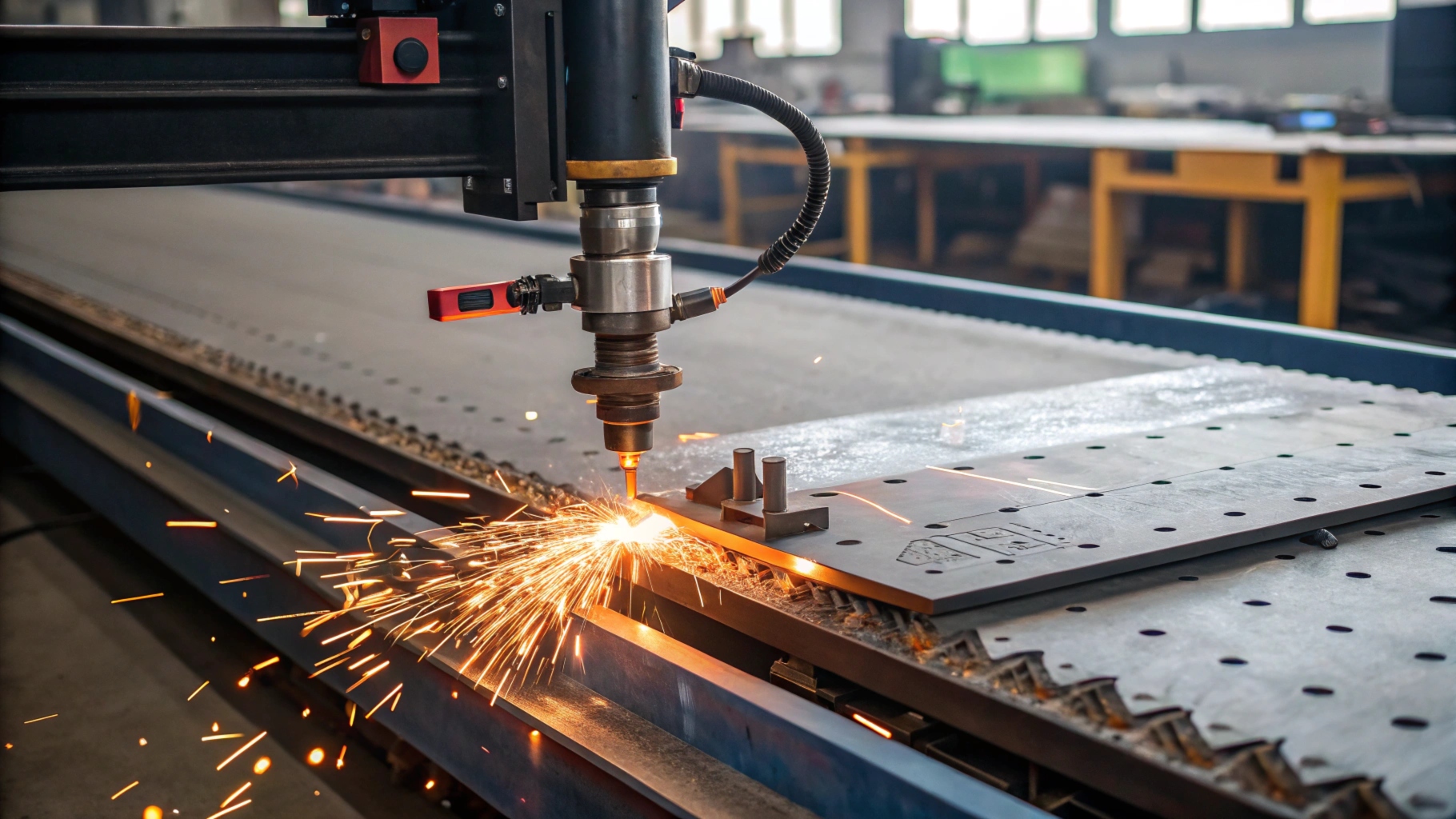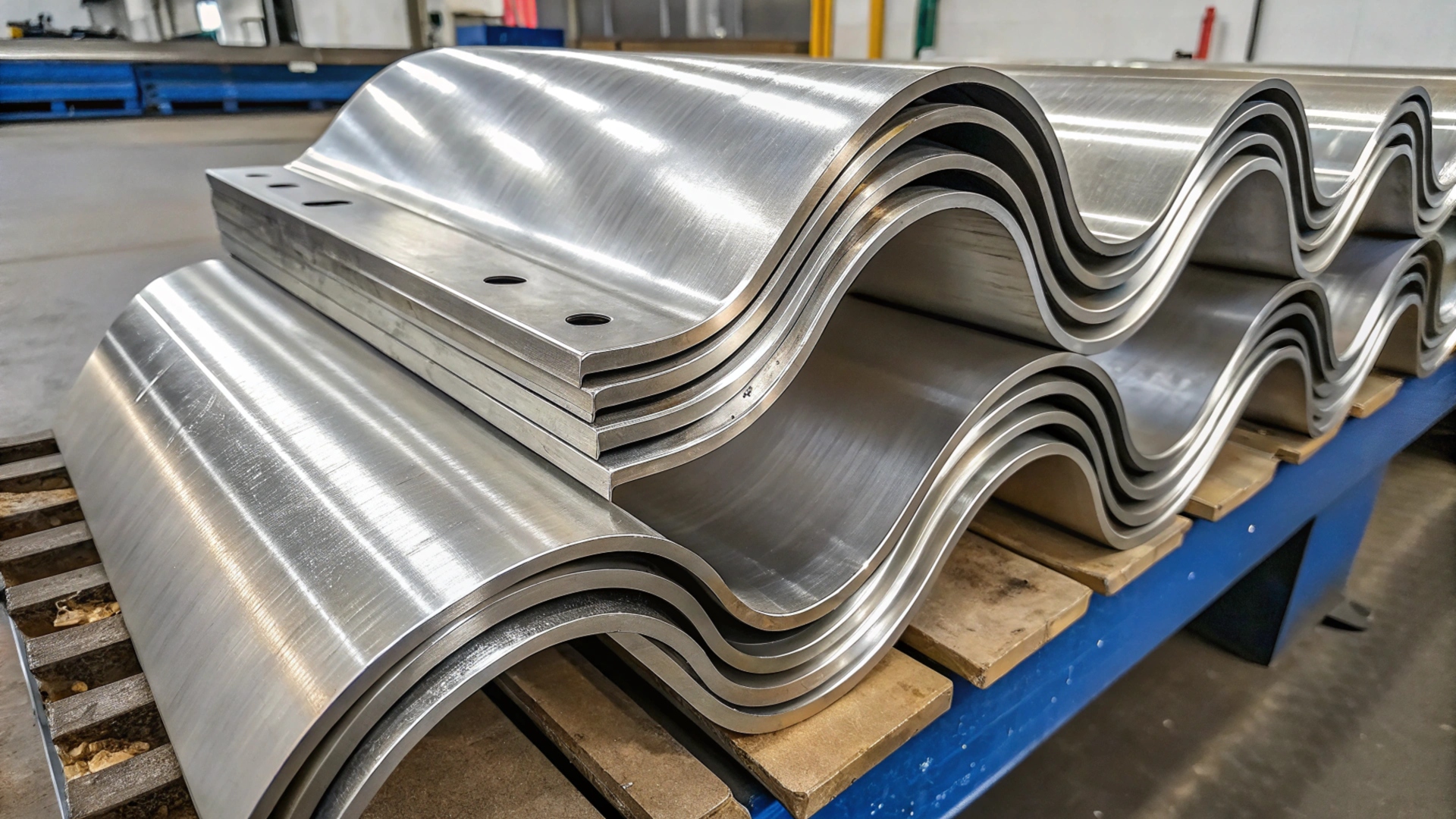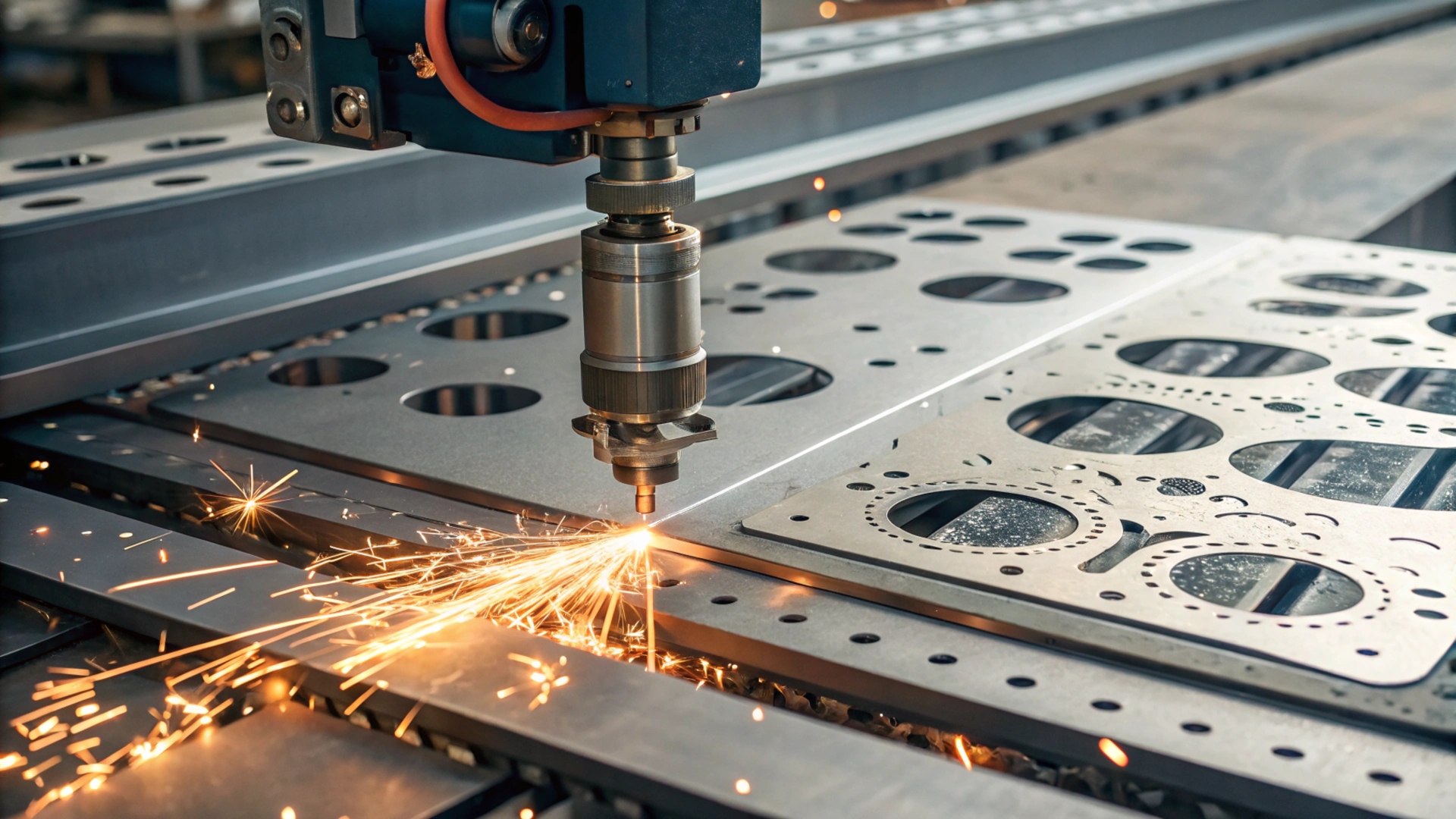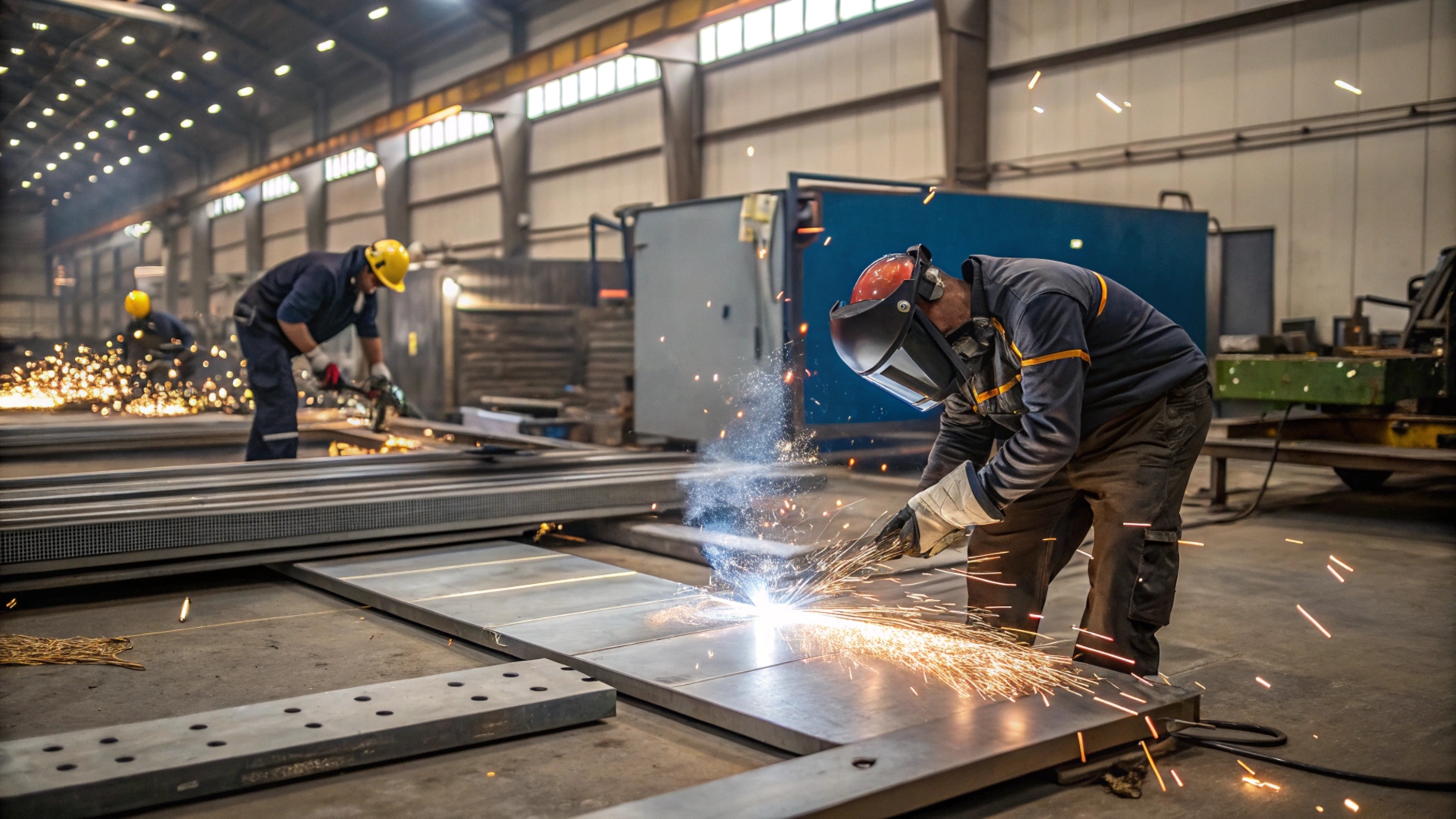
Sheet metal fabrication can solve complex design problems, but how does it work? Let’s explore this essential manufacturing process.
Sheet metal fabrication is the process of cutting, forming, and assembling metal sheets to create products or components.
Keep reading to uncover the techniques, benefits, and applications of sheet metal fabrication.
What is sheet metal fabrication?
Sheet metal fabrication transforms flat metal sheets into functional parts. Why is it essential to modern manufacturing?
Sheet metal fabrication involves cutting, bending, and assembling metal sheets into precise shapes and components.

Sheet metal fabrication uses versatile techniques like laser cutting, press braking, and welding. Here’s an overview of key techniques:
Cutting Processes 1
Sheet metal is cut using methods like laser cutting, plasma cutting, or waterjet cutting. Each method has unique advantages:
| Method | Precision | Speed | Common Materials |
|---|---|---|---|
| Laser cutting | High | Moderate | Stainless steel, aluminum |
| Plasma cutting | Medium | Fast | Carbon steel, aluminum |
| Waterjet cutting | High | Slow | Any material |
Forming Techniques
- Bending: Achieved through press braking, creating precise angles.
- Punching: Creates holes or shapes in the sheet.
- Rolling: Produces cylindrical or curved forms.
Assembly Methods
Assembled parts use processes like:
These methods make sheet metal fabrication flexible and suitable for diverse industries.
What are the different types of sheet metal fabrication?
Sheet metal fabrication adapts to diverse projects, but what types of fabrication exist?
Different types include cutting, forming, and joining techniques tailored to material properties and project needs.

The versatility of sheet metal fabrication stems from its techniques. Let’s examine three main categories:
Cutting Techniques
Cutting separates material into smaller pieces. Common methods include:
- Shearing: Cuts straight lines on thin sheets.
- Blanking: Cuts out shapes from larger sheets.
- Laser Cutting: Offers high precision for intricate designs.
Forming Techniques
These methods shape metal without removing material:
- Bending: Creates angles or curves.
- Deep Drawing 3: Forms deep, hollow structures.
- Embossing: Adds decorative or functional patterns.
Joining Techniques
Joining combines multiple parts into a single structure:
- Welding: Common for permanent joins.
- Adhesive Bonding: Used for lightweight materials.
- Fastening: Rivets and screws allow disassembly.
Each type plays a vital role, ensuring sheet metal fabrication meets diverse requirements.
What are the benefits and limitations of sheet metal fabrication?
Why choose sheet metal fabrication for your projects? What are the trade-offs to consider?
Sheet metal fabrication offers durability and versatility but has cost and complexity challenges.

Let’s explore the benefits and limitations to make informed decisions:
Benefits of Sheet Metal Fabrication
- Durability: Sheet metal is strong and resists wear.
- Versatility: Supports various materials and designs.
- Precision: Modern techniques ensure accuracy.
- Scalability: Suitable for prototypes and mass production.
- Customization: Designs can be tailored to exact specifications.
Limitations of Sheet Metal Fabrication
- Cost: High initial tooling costs.
- Complexity: Advanced techniques require skilled operators.
- Material Constraints: Not all metals are easily formable.
- Lead Times: Customization can extend production schedules.
Dive Deeper: Cost-Benefit Analysis
When deciding on sheet metal fabrication, balancing cost and quality is key. Consider these factors:
| Factor | Low-Cost Option | Premium Option |
|---|---|---|
| Material | Mild steel | Stainless steel or titanium |
| Technique | Shearing | Laser cutting |
| Finish | Basic coating | Powder coating or polishing |
Understanding these trade-offs helps optimize design and production.
Applications of Sheet Metal Fabrication
Where does sheet metal fabrication excel? Explore its role in modern industries.
Sheet metal fabrication supports industries like automotive, aerospace, and medical equipment with tailored solutions.

Sheet metal fabrication’s adaptability makes it indispensable. Here are key industries and applications:
Automotive Industry 4
- Body Panels: Doors, roofs, and hoods.
- Exhaust Systems: Durable and heat-resistant parts.
- Custom Parts: Prototypes or aftermarket components.
Aerospace Sector 5
- Aircraft Structures: Lightweight yet strong materials.
- Interior Components: Precision-designed seating and panels.
- Engine Parts: High-temperature resistance.
Medical Equipment6
- Surgical Tools: Stainless steel instruments.
- Device Enclosures: Durable, easy-to-clean casings.
- Custom Solutions: Rapid prototypes for innovation.
Dive Deeper: Emerging Trends
New applications of sheet metal fabrication include renewable energy and robotics. For example:
- Solar Panels: Frames and mounting brackets.
- Robotic Systems: Housings and mechanical arms.
These evolving uses demonstrate the growing relevance of sheet metal fabrication.
Conclusion
Sheet metal fabrication offers precision, versatility, and durability for countless applications. It’s the backbone of modern manufacturing. Let’s make the most of this incredible technology.
-
Offers a comparison of cutting methods with pros and cons to help readers choose the right technique for their application. ↩
-
Clarifies when to use welding versus fastening for joining metal parts, helping readers make informed decisions in their fabrication process. ↩
-
Provides insights into how deep drawing is used in manufacturing hollow structures, helping readers identify relevant use cases. ↩
-
Highlights the role of sheet metal in automotive manufacturing, particularly for body panels, exhaust systems, and custom parts. ↩
-
Details the specific applications in aerospace, such as lightweight structures and engine parts, crucial for understanding its high-performance roles. ↩
-
Explains how sheet metal supports precision and cleanliness in medical equipment, emphasizing its importance in healthcare innovation. ↩

